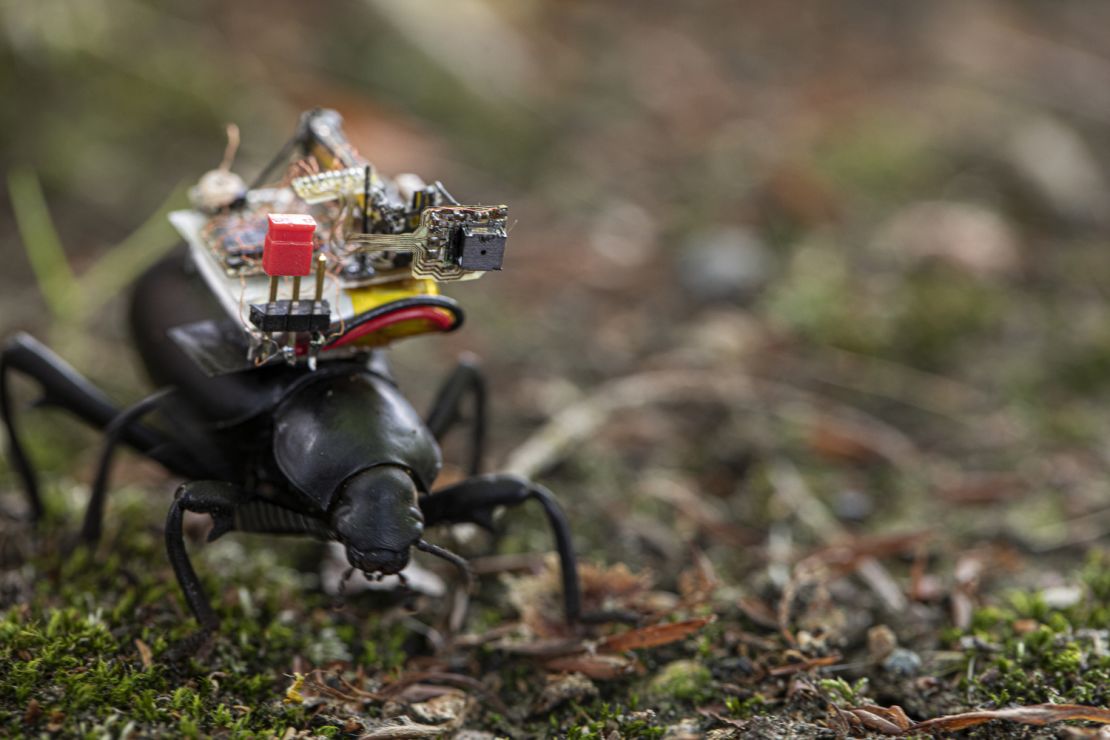Scientists have developed a tiny wireless camera that can ride on the back of an insect, giving users a bug’s-eye view of the world.
Researchers at the University of Washington in the US developed the technology to test the potential of miniature cameras. Their device weighs about 250 milligrams – around one-tenth the weight of a playing card – and streams video to a smartphone at one to five frames per second.
Sitting on a mechanical arm that can pivot 60 degrees, the camera allows a viewer to capture a high-resolution, panoramic shot or track a moving object. As well as recording everything an insect sees, it can be used as the “eyes” for small robots.
But its development, which showed how recording devices could potentially shrink until virtually invisible, will raise concerns about privacy.
“We have created a low-power, low-weight, wireless camera system that can capture a first-person view of what’s happening from an actual live insect or create vision for small robots,” senior author Shyam Gollakota said in a statement.

“Vision is so important for communication and for navigation, but it’s extremely challenging to do it at such a small scale. As a result, prior to our work, wireless vision has not been possible for small robots or insects.”
The team’s research was published Wednesday in the journal Science Robotics.
They used a tiny, ultra-low-power black-and-white camera that can sweep across a field of view with the help of a mechanical arm, in order to best mimic how an insect sees its environment. The arm moves when the team applies a high voltage, which makes the material bend and move the camera to the desired position.
“One advantage to being able to move the camera is that you can get a wide-angle view of what’s happening without consuming a huge amount of power,” co-lead author Vikram Iyer said.
The camera and arm were controlled via Bluetooth from a smartphone, which can be up to 120 meters (394 feet) away. It currently requires batteries, but the researchers are looking at creating a version that uses other forms of power.
The team said they hope their device could be used to explore novel or remote environments, and serve biological purposes.
But the researchers also raised the prospect of covert surveillance that would be difficult for subjects to detect, and they acknowledged privacy concerns.
“As researchers we strongly believe that it’s really important to put things in the public domain so people are aware of the risks and so people can start coming up with solutions to address them,” Gollakota said.
“There are so many questions you could explore, such as how does the beetle respond to different stimuli that it sees in the environment?” Iyer added. “But also, insects can traverse rocky environments, which is really challenging for robots to do at this scale. So this system can also help us out by letting us see or collect samples from hard-to-navigate spaces.”
Earlier attempts to produce innovative cameras have also sought to mimic the vision of insects.
In 2013, researchers created a digital camera that imitates the bulging eyes of insects, specifically fire ants and bark beetles.

